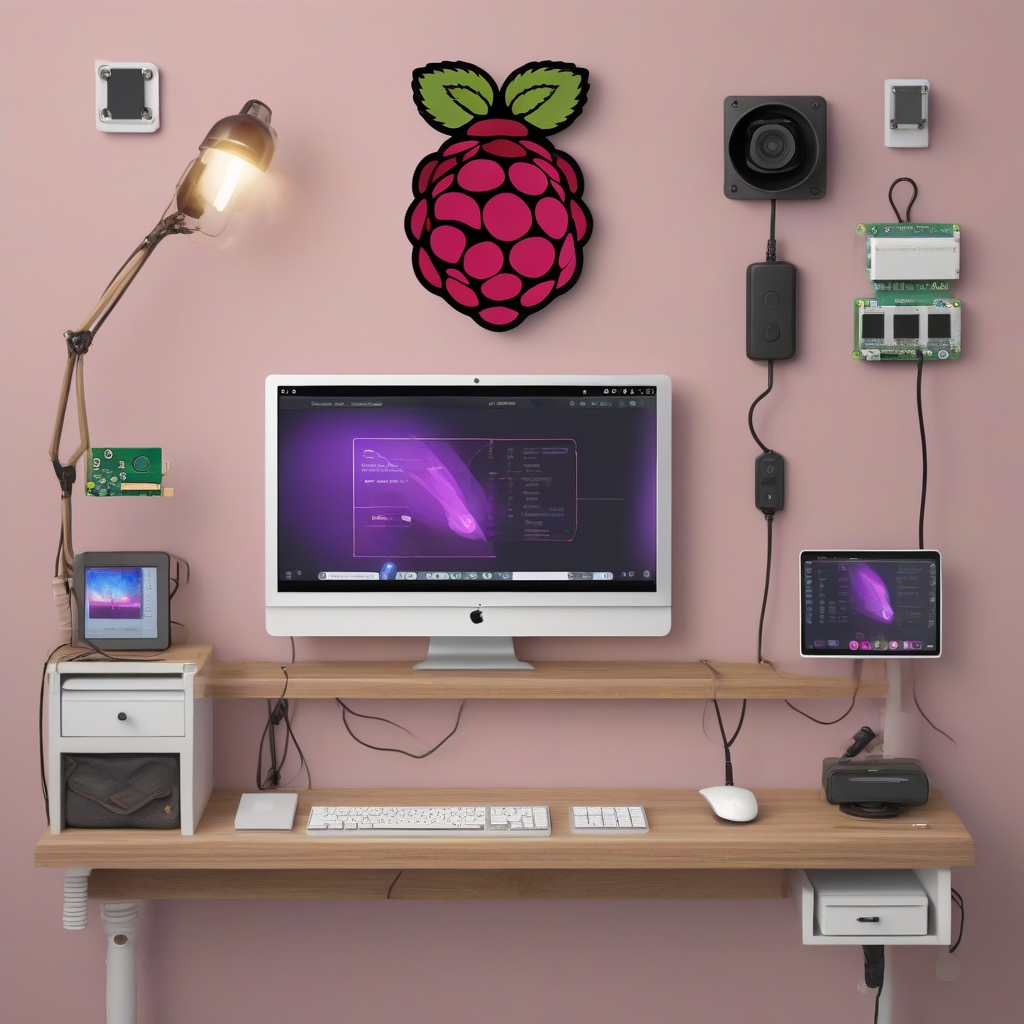**Raspberry Pi AI Camera – Affordable AI Review**
**Getting Started with Raspberry Pi AI Camera**
The era of artificial intelligence (AI) is upon us, and with the advent of accessible and affordable technology, the possibilities are endless. One such game-changer is the **Raspberry Pi AI Camera**. Today, we will dive deep into this innovative tool and explore why it stands out as a top choice for tech enthusiasts and DIY creators.
**What is the Raspberry Pi AI Camera?**
The Raspberry Pi AI Camera is a powerful yet budget-friendly combination of the Raspberry Pi board and a camera module embedded with AI capabilities. It empowers users to create and experiment with AI-driven projects without breaking the bank.
Below are some key components that make this setup a potent tool:
– **Raspberry Pi Board**: This compact computer can be programmed to perform a myriad of tasks, from controlling devices to processing data.
– **Camera Module**: A high-quality camera that captures images and videos to feed into the AI system.
– **AI Software**: Typically involves open-source frameworks like TensorFlow Lite or other machine learning libraries.
**Unboxing and Components:**
When you open the Raspberry Pi AI Camera package, you’ll find:
Each component plays a critical role in making this setup functional and efficient.
**Setting Up Your Raspberry Pi AI Camera**
Setting up the Raspberry Pi AI Camera is straightforward. Here’s a step-by-step guide to get you started:
**Step 1: Assemble the Hardware**
1. **Connect the Camera Module**: Attach the camera flex cable to the CSI port on the Raspberry Pi board. Make sure the connection is secure and the pins are aligned properly.
2. **Insert the MicroSD Card**: This card contains the operating system and necessary software. Insert it into the corresponding slot on the Raspberry Pi.
3. **Power Up**: Plug the power supply into your Raspberry Pi.
**Step 2: Install the Software**
1. **Download the OS**: If not pre-loaded, download the Raspberry Pi OS from the official website and flash it onto your MicroSD card.
2. **Install AI Libraries**: Use terminal commands to install TensorFlow Lite or other AI libraries. This could look something like:
“` bash
sudo apt-get update
sudo apt-get install libatlas-base-dev
pip3 install tensorflow
“`
**Step 3: Configure the Camera**
1. **Enable Camera Support**: Go into the Raspberry Pi configuration settings and enable the camera.
2. **Test Installation**: Run a test script to see if the camera is properly set up and capturing images.
**Exploring AI Capabilities**
Once your hardware is set up and your software is installed, the real fun begins with exploring AI capabilities. Here are some exciting projects you can kickstart to understand the potential of your new AI camera:
### **Face Recognition**
Utilize machine learning algorithms to recognize and track faces. This type of project could have applications in security systems or automated customer service kiosks.
### **Object Detection**
Write code to detect and classify objects within the camera’s field of view. Imagine a smart home setup where your system can identify and keep track of different objects’ locations.
### **Motion Detection**
Another fascinating application is to set up your AI camera for motion detection. This can be used for surveillance or even interactive art installations.
**Why Choose the Raspberry Pi AI Camera?**
When it comes to affordability and functionality, the Raspberry Pi AI Camera stands out. Here are some compelling reasons to choose this setup:
**Affordable**: Compared to other AI solutions, the Raspberry Pi setup is extremely cost-effective, making it accessible to a wider audience.
**Compact and Portable**: The small form factor of the Raspberry Pi board and camera module makes it ideal for portable use cases.
**Customizable**: The open nature of the platform means you can tailor it to your specific needs, whether for personal projects, educational purposes, or even small-scale commercial applications.
**Rich Community Support**: The Raspberry Pi community is vast and active. You’ll find an abundance of tutorials, forums, and resources to help you troubleshoot and expand your projects.
**Challenges and Considerations**
While the Raspberry Pi AI Camera is a fantastic tool, there are some challenges and considerations to keep in mind:
: Raspberry Pi may not be as powerful as high-end AI systems. Complex neural networks might require longer processing times.
: A stable power supply is essential for uninterrupted operations.
: For beginners, there might be a learning curve related to setting up and programming the system.
**Conclusion**
To wrap up, the Raspberry Pi AI Camera is a revolutionary tool that brings the power of AI to the masses. Whether you are a hobbyist looking to tinker with new technology, an educator aiming to inspire your students, or a developer prototyping the next big thing, this setup offers a perfect blend of affordability, flexibility, and capability. Dive in, get creative, and transform your ideas into reality with the Raspberry Pi AI Camera.

Leave a Reply